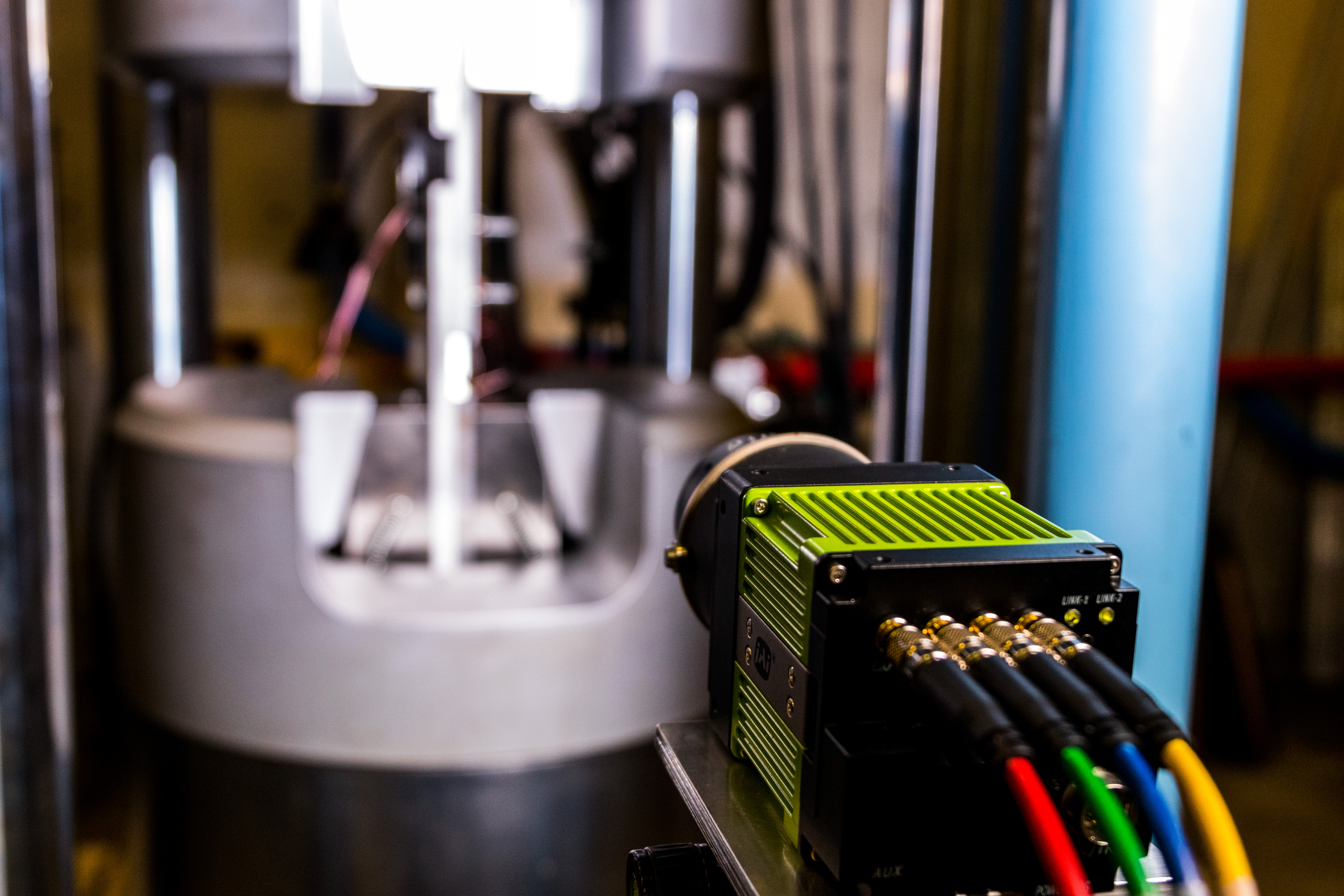Digital image correlation (DIC) is a full-field, non-contact, optical measurement technique that uses a series of images to determine the displacements or deformations of objects. DIC uses a cross correlation or similarity score to determine where a set of pixels have moved from one image to another. First used in the late 1980s, DIC began by determining correlation on an integer pixel basis, but as the methods developed and matured, sub-pixel registration became common through the use of sub-pixel interpolation functions, such as cubic polynomials or B-splines. This project is focused on the development of a 3D DIC system capable of performing high accuracy, full-field, dynamic measurements.

Images are made up of many discrete pixels as shown in Figure 2a, which are used to form the basis of the correlation score. A subset, such as that shown in red in Figure 2b, is taken from an image and then compared to future images to calculate the correlation score, which can then be optimized through the use of a non-linear optimization scheme, such as the Gauss-Newton method, to determine the closest match in subsequent images.
The results from a DIC analysis can be used for many things. DIC has been used to analyze small lab specimens to large civil structures for both displacements and strains. Single targets can be tracked, or a speckle pattern or other randomized, contrasting pattern can be applied to a structure to determine full-field displacements or strains, which can then be used for further analysis.